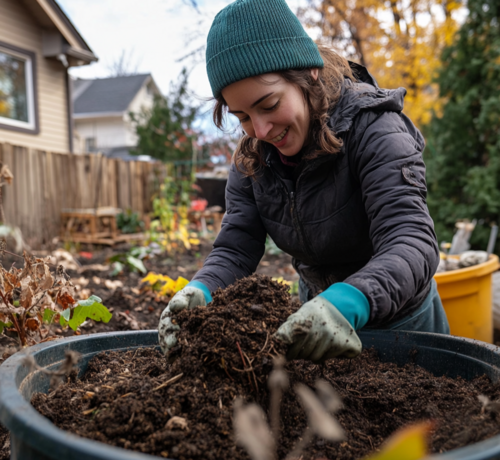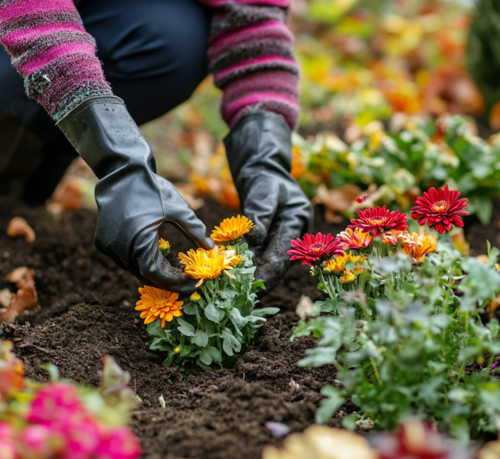How to Get Your Lawn and Garden Ready for Fall
Introduction
As the wonderful autumn season approaches, it’s time to prepare your lawn and garden for the cooler weather. Proper preparation now will help your plants, soil, and trees thrive throughout the fall and into the winter, ensuring they’re ready to flourish come spring.
Here are essential tips to guide you through the transition so that your outdoor space remains healthy and vibrant.
Assess the Garden and Lawn
One of the first steps to take is assessing the current state of your garden, trees, and lawn. Take a careful walk around your yard, noting any damage or areas that may need attention. This can include:
- Identifying bald patches in the soil that may require soil amendments.
- Spotting bulbs that need to be removed before winter to avoid frost damage.
- Preparing herbs for the indoors if they’re not cold-hardy.
- Pruning overgrown or dead branches to ensure your trees are healthy before winter storms.
An early assessment allows you to address any issues now, preventing problems later when the cold sets in. If you notice any major damage to your trees or plants, consider calling a professional for assistance.
Add Soil Amendments for Winter Enrichment

Boosting Soil Health by Mixing Compost for a Thriving Garden
Fall is the perfect time to add soil amendments that will nourish your garden through the cold months. This helps maintain soil quality, ensuring that when spring arrives, your plants have the nutrients they need to grow.
Tips for Applying Soil Amendments:
- Use a gardening fork to gently mix in compost , mulch, or organic manure . These are excellent slow-releasing fertilizers that enrich the soil naturally.
- Focus on areas without plants or around the base of trees and shrubs.
- If you’ve cleared a garden bed, till the soil to remove weeds or roots before adding amendments.
By adding organic fertilizers now, you’re setting your garden up for success by promoting healthy soil. The amendments will gradually break down and replenish the nutrients, reducing the workload when spring arrives.
Why Organic Fertilizers?
Unlike chemical fertilizers, organic options improve soil structure, encourage beneficial microorganisms, and release nutrients slowly, which is ideal for long-term soil health. They also ensure your garden is environmentally sustainable.
Move Herbs Indoors
Herbs are sensitive to cold weather, and frost can damage or even kill them. Move potted herbs indoors or to a sheltered area like a porch, where they’ll still get plenty of sunlight without exposure to frost or snow.
Tips for Indoor Herbs:
- Place them on a sunny windowsill or countertop.
- Be mindful of temperature changes, and avoid placing them near drafty windows or heating vents.
Bringing your herbs indoors not only protects them but allows you to continue enjoying fresh, homegrown flavors throughout the winter.
Replace Summer Plants with Autumn-Friendly Varieties

Bright Mums Being Planted for a Colorful Autumn Garden
As summer plants start to fade, now is the time to replace them with hardier, autumn-friendly options . Swap out delicate summer annuals in garden beds, window boxes, or along walkways for seasonal flowers such as:
- Mums
- Pansies
- Asters
Additionally, consider digging up any bulbs that aren’t hardy for your planting zone. Store them in a cool, dry place to replant next year. This ensures that your garden maintains color and interest even as temperatures drop.
Fertilize the Lawn and Control Weeds
Fall is an excellent time to fertilize your lawn . Choose a all-natural slow-release fertilizer to provide essential nutrients that help your grass store energy for the winter in the form of carbohydrates.
Best Practices for Fall Lawn Fertilization
- Apply fertilizer evenly, focusing on areas that looked stressed during summer.
- Use a pre-emergent herbicide to prevent weed seeds from germinating in spring. This targets weeds that may have taken hold over the summer without damaging your grass.
Selective vs. Nonselective Herbicides
- Selective herbicides target specific weeds without harming your lawn.
- Nonselective herbicides kill any plant they come in contact with. Be cautious when using these products, especially around desirable plants and grass.
By taking care of your lawn now, you can reduce weed problems next year and promote healthy, green growth when the weather warms up.
Conclusion: Get Ready for Fall with Proper Lawn and Garden Care
While fall prep may seem minimal, these key tasks— assessing your garden, adding soil amendments, moving herbs indoors, replacing summer plants, and fertilizing your lawn —are critical to maintaining a healthy, beautiful outdoor space all year round. Taking the time to complete these tasks now will make spring gardening much easier and more rewarding.
Originally posted on August 24, 2018.


